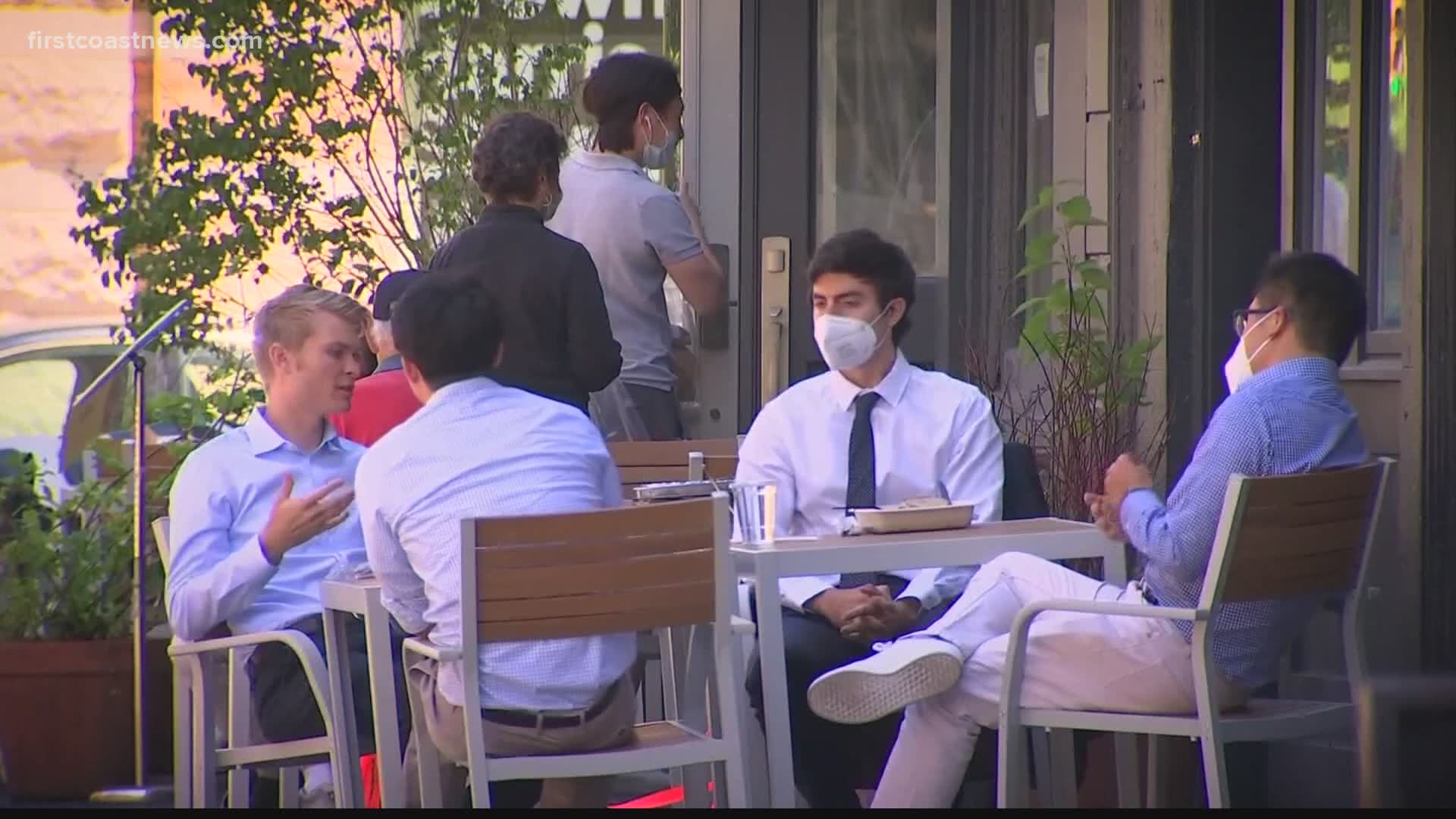JACKSONVILLE, Fla. — Many of us have started eating out at restaurants again, but a new study from the Centers for Disease Control and Prevention may cause you to have some reservations due to COVID-19.
The study, published Thursday, found adults who tested positive for COVID-19 were twice as likely to have eaten at a restaurant within a two-week period before getting sick. Researchers said not being able to wear masks while eating or drinking, and the restaurants' air circulation may be factors.
"Direction, ventilation and intensity of airflow might affect virus transmission, even if social distancing measures and mask use are implemented according to current guidance," researchers write in the study. "Masks cannot be effectively worn while eating and drinking, whereas shopping and numerous other indoor activities do not preclude mask use."
"It's not completely surprising, to be perfectly honest," Dr. Elizabeth Ransom, Executive Vice President and Chief Physician Officer of Baptist Health, said about the study. "We know the virus spreads most effectively when there are people who are in close contact with each other."
According to Ransom, eating outside is safer whenever possible, and if you don't feel comfortable, don't eat out.
"Just try to be as safe as possible. If there's a restaurant that appears to be crowded and there's only indoor seating, it's probably not the best option and it may be a safer choice to choose a different location," Ransom said.
There were some limitations to the study. Researchers looked at just 314 symptomatic patients in 10 states in July, and they didn't specify if they ate inside or outside.
Of the 314 adults in the study, 154 tested positive and 160 tested negative. Seventy-one percent of those who tested positive said they wore face masks in public, compared to 74 percent of those who tested negative. Both groups said they went to places like gyms, hair salons, stores and in-home gatherings, but the positive cases were twice as likely to go out to eat in the two weeks prior to feeling sick.
Forty-two percent of those who tested positive said they had close contact with at least one person who had COVID-19, most being family members, compared to 14 percent who tested negative.
The study was released the same week Florida Governor Ron DeSantis said he plans to ease restrictions on restaurants. He didn't say when this would be done or how the restrictions would be eased.
Ransom agreed with the CDC's precautions for staff and customers at restaurants, including staff wear a mask, customers sit six feet apart from another party, stay home if you're sick, use touchless payment options and menu options if possible and continue to practice good hand hygiene.
"For all of us, it's important to remain vigilant. It's important to still be very, very careful. This is a dangerous virus," Ransom said.
The CDC recommends on its website the lowest risk is going to a drive-through or getting take-out or delivery. There's more risk for outdoor seating with tables six feet apart. There's even more risk if customers eat inside with tables six feet apart, and the highest risk is on-site dining with a seating capacity not reduced and tables not spaced at least six feet apart.

